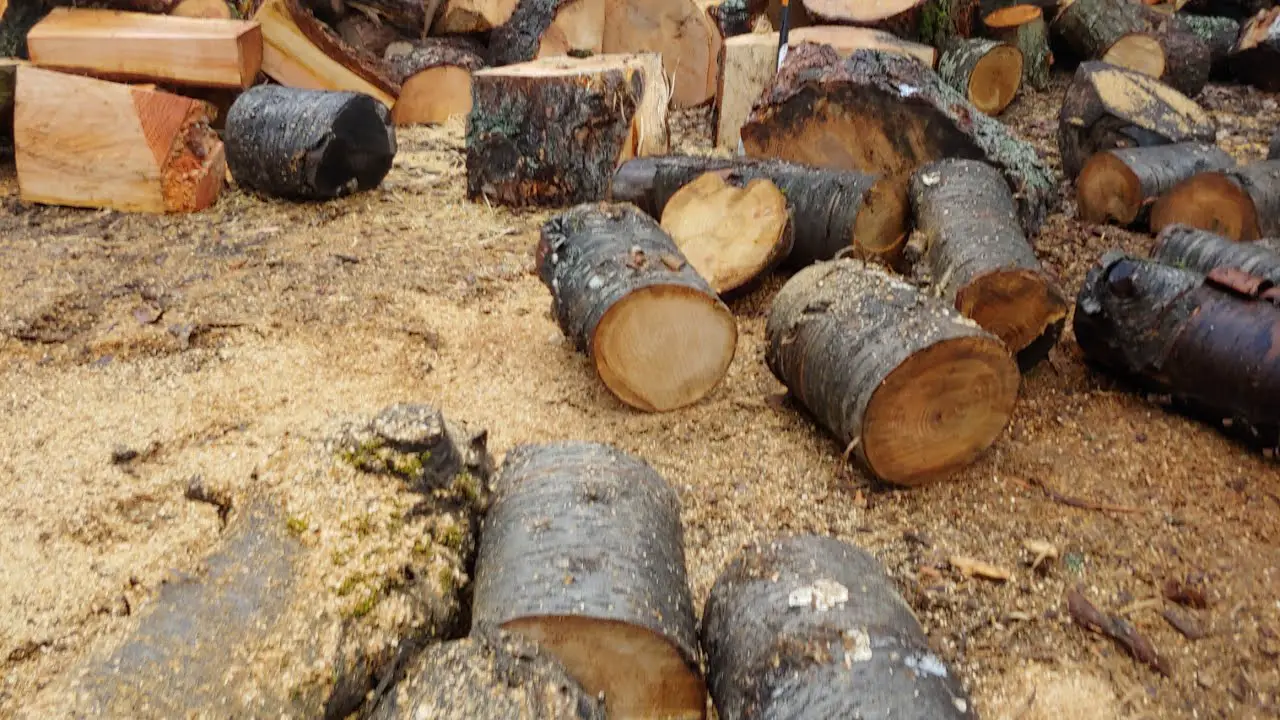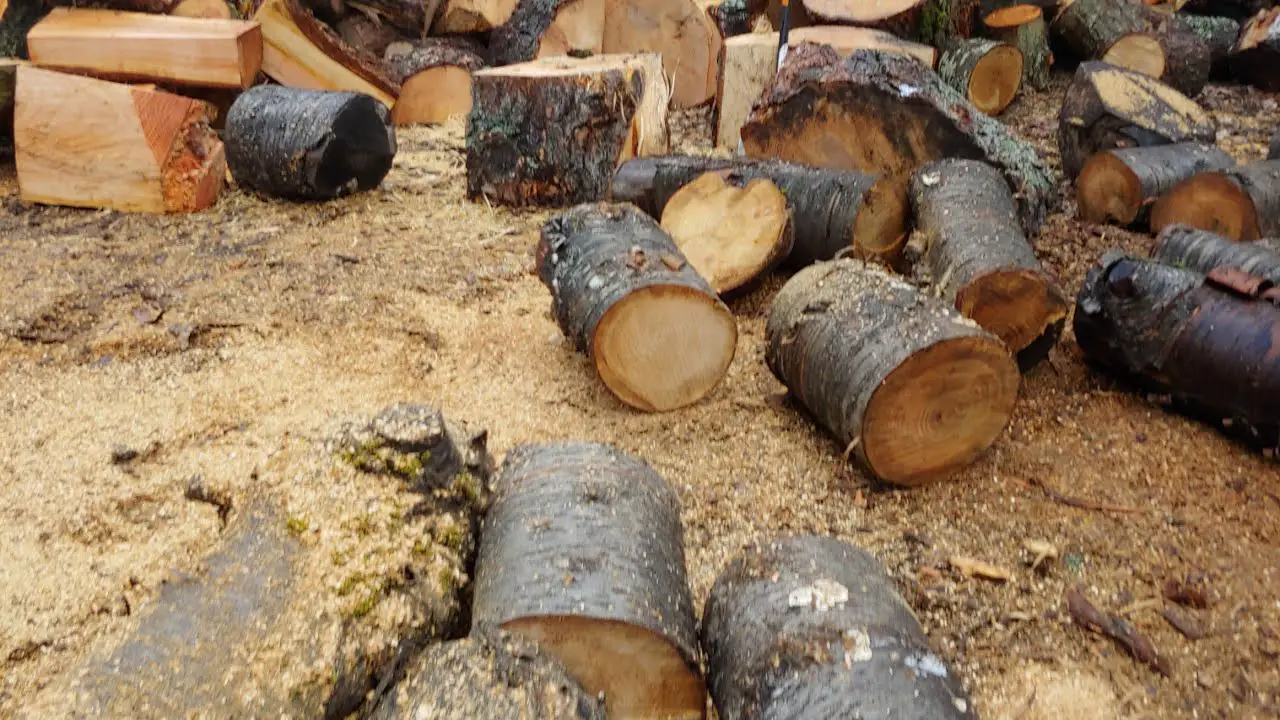So, you’ve got some cherry wood and you’re wondering if you can burn it while it’s still green? Well, let’s dive right into it and find out! Can you burn cherry wood when it’s still green? That’s a great question, and I’m here to give you all the answers you need.
Burning wood is a common way to keep warm, cook food, or create a cozy ambience. But when it comes to burning cherry wood specifically, there are a few things you need to consider. Green wood, also known as unseasoned wood, refers to wood that has recently been cut and hasn’t had enough time to dry out. This means that the moisture content in the wood is still relatively high.
Burning green wood can be a bit challenging. It tends to produce more smoke, less heat, and can create creosote buildup in your chimney or flue. However, with proper precautions and techniques, you can still burn cherry wood that is green. So, let’s explore how you can do it safely and effectively!
Wondering if you can burn cherry wood when it’s still green? While it’s possible, it’s not ideal. Green cherry wood contains a high moisture content, which can cause excessive smoke, poor heat output, and difficulty in igniting. It’s best to let the wood dry and season for at least a year before using it for burning. This ensures better combustion, increased heat efficiency, and a more enjoyable fire.

Can You Burn Cherry Wood Green?
Cherry wood is a popular choice for woodworking projects and is known for its attractive grain and rich color. But what about burning cherry wood? Can it be burned while still green? In this article, we will explore the benefits and drawbacks of burning cherry wood in its green state, as well as provide some tips for effectively burning green cherry wood.
Understanding Green Cherry Wood
Before we delve into the question of whether or not you can burn cherry wood while it is still green, let’s first understand what green wood actually is. Green wood refers to wood that has been freshly cut and has not been seasoned or dried. When wood is green, it contains a significant amount of moisture, which can make it more difficult to burn effectively.
The Benefits of Burning Green Cherry Wood
1. Easy availability: One of the advantages of burning green cherry wood is that it is readily available. If you have access to cherry trees or are working on a woodworking project that involves cherry wood, you may have an abundance of green cherry wood on hand that can be used for burning.
2. Cost-effective: Burning green cherry wood can be cost-effective. Since freshly cut green wood is often easier to come by and may even be offered for free, burning green cherry wood can save you money on purchasing seasoned wood.
3. Aromatic qualities: Cherry wood has a pleasant aroma, and when burned green, it releases a unique fragrance that can add to the ambiance and enjoyment of a fire.
The Drawbacks of Burning Green Cherry Wood
1. Difficulty in burning: Green cherry wood contains a high moisture content, making it challenging to burn. Burning green wood can result in a smoldering fire, excessive smoke, and a lack of heat output. The excess moisture can cause the wood to burn slowly and inefficiently.
2. Potential damage to your fireplace or stove: When green cherry wood is burned, it produces creosote, a highly flammable substance that can accumulate in your chimney or stovepipe. This buildup can increase the risk of chimney fires and damage to your heating appliances.
3. Incomplete combustion: Green wood tends to produce more smoke and ash due to the high moisture content. This can lead to lower air quality indoors and increased maintenance requirements for your fireplace or stove.
Tips for Burning Green Cherry Wood
1. Allow for proper seasoning: If you plan to burn green cherry wood, it is essential to allow it to season or dry properly. This process involves storing the wood in a dry, well-ventilated area for at least six months to a year. Seasoned wood burns more efficiently and produces more heat.
2. Mix with seasoned wood: To improve the burn quality of green cherry wood, it is recommended to mix it with seasoned wood. By combining the two types of wood, you can enhance the heat output and reduce the amount of smoke and creosote produced.
3. Use smaller pieces: Cut green cherry wood into smaller pieces to help facilitate drying and improve burnability. Smaller pieces will also increase the surface area of the wood exposed to heat, allowing for better combustion.
In conclusion, while it is possible to burn cherry wood while it is still green, there are both benefits and drawbacks to consider. Green cherry wood can be readily available and cost-effective, but it can be challenging to burn and may result in excessive smoke and creosote buildup. To effectively burn green cherry wood, it is essential to properly season the wood, mix it with seasoned wood, and use smaller pieces. By following these tips, you can mitigate some of the challenges and enjoy the unique aroma and beauty of burning green cherry wood.
Can You Burn Cherry Wood Green: Key Takeaways
- Green cherry wood can be burned, but it’s not ideal.
- Green wood produces more smoke and less heat when burned.
- It is best to season cherry wood properly before burning it.
- Seasoning involves drying the wood for several months.
- Dry cherry wood burns more efficiently, producing more heat and less smoke.
Frequently Asked Questions
Welcome to our FAQ section on burning cherry wood while it’s still green. Here, we address some common queries about this topic to help you understand the process better.
1. How long does cherry wood need to dry before it can be burned?
It is crucial to let cherry wood dry properly before burning it. Typically, it takes around 6 to 12 months for green cherry wood to dry and be suitable for burning. The exact time depends on several factors, including the thickness of the wood, ambient temperature, and humidity levels. Drying the wood allows it to reach the optimal moisture content for efficient and clean burning.
To speed up the drying process, ensure the wood is adequately stacked and exposed to enough airflow. Avoid storing the wood in a damp or enclosed space, as this can prolong the drying time and lead to mold or rot.
2. What are the consequences of burning green cherry wood?
Burning green cherry wood can have several negative consequences. Firstly, green wood has a higher moisture content, leading to lower heat output. This means you’ll need to burn more wood to achieve the desired level of warmth. Additionally, burning green wood produces more smoke and creosote, which can lead to poor indoor air quality and potentially cause chimney fires.
Furthermore, green wood can create excessive build-up in your chimney, increasing the risk of blockages and reducing its efficiency. It’s essential to allow cherry wood to properly dry before using it as a fuel source to ensure a cleaner burn and safer fireplace or stove operation.
3. Can you mix dry cherry wood with green cherry wood when burning?
It is not recommended to mix dry cherry wood with green cherry wood when burning. This is because green wood has a higher moisture content and will require more heat to dry it out during the combustion process. Mixing green wood with dry wood can lead to inefficient burning and reduced heat output.
For optimal results, it’s best to burn dry cherry wood, which has been properly seasoned and has a lower moisture content. This will provide better heat output, cleaner burning, and reduce the risk of excessive creosote buildup in your chimney.
4. How can you tell if cherry wood is dry enough to be burned?
Several signs indicate whether cherry wood is dry enough to be burned. Firstly, check the weight of the wood. Dry wood feels significantly lighter compared to green wood. You can also inspect the moisture content using a moisture meter, which measures internal wood moisture levels. Generally, a moisture content of below 20% is suitable for burning.
Additionally, look for visible cracks or splits on the wood’s end grain, indicating that it has dried over time. Lastly, if the wood produces a clear, hollow sound when struck together, it signifies that it’s dry and ready for burning. Combining these indicators will help ensure you burn properly seasoned cherry wood.
5. Can you speed up the drying process for green cherry wood?
While it’s not possible to drastically accelerate the drying process for green cherry wood, there are some measures you can take to speed it up. Firstly, ensure the wood is cut into smaller pieces, as this increases the surface area and allows for quicker drying.
Next, stack the wood in a well-ventilated area, preferably elevated from the ground to facilitate airflow. Orient the wood in a way that allows air to circulate freely around each piece. Lastly, exposing the wood to direct sunlight can help to accelerate the drying process. However, be cautious not to leave the wood exposed to the elements for too long, as excessive moisture or rain can hinder the drying process.

What happens if you burn unseasoned wood? #firewood #fireplace #woodheat
Summary
Burning cherry wood that is green can be problematic. Green wood has a high moisture content, making it hard to burn and causing excessive smoke. It’s best to let cherry wood dry for at least six months before using it as firewood. Alternatively, consider using seasoned or kiln-dried cherry wood, which burns more efficiently and produces less smoke. Remember, always prioritize safety when handling firewood and consult local regulations before burning wood.
In conclusion, burning green cherry wood may not be the best idea due to difficulties in burning and excessive smoke. It is advisable to let the wood dry first or opt for seasoned or kiln-dried cherry wood. Safety should always be a top priority when handling firewood, and checking local regulations is essential. Happy burning!
